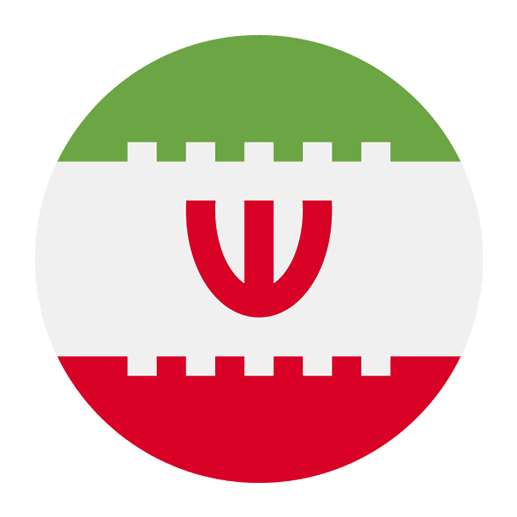Iran, a country with a rich tapestry of history, culture, and tradition, offers a unique perspective into the Persian language through its holidays. Persian holidays are not just days of celebration but are woven with centuries-old customs, stories, and linguistic treasures. For language learners, understanding these holidays can provide invaluable insights into the Persian language and culture. This article will delve into the significance of some key Persian holidays, exploring their historical roots, cultural practices, and the linguistic richness they offer.
Nowruz: The Persian New Year
Nowruz, meaning “new day,” is the Persian New Year celebrated on the vernal equinox, marking the first day of spring. It is one of the most significant holidays in Persian culture and has been celebrated for over 3,000 years. Nowruz is more than just a new year’s celebration; it is a symbol of renewal, rebirth, and the triumph of light over darkness.
Historical Significance
Nowruz has its origins in Zoroastrianism, the ancient pre-Islamic religion of Persia. Zoroastrianism emphasizes the duality of good and evil, and Nowruz symbolizes the victory of good (light) over evil (darkness). This celebration dates back to the Achaemenid Empire (550-330 BCE) and has been observed by various dynasties and empires throughout Persian history.
Cultural Practices
The celebration of Nowruz is marked by several unique customs:
– **Haft-Seen Table**: A traditional table setting with seven items starting with the Persian letter ‘S’ (س). Each item symbolizes a different concept, such as Sabzeh (sprouted greens) for rebirth, and Seer (garlic) for medicine.
– **Chaharshanbe Suri**: A fire-jumping festival held on the last Wednesday before Nowruz, symbolizing the purification of the body and soul.
– **House Cleaning (Khaneh Tekani)**: A thorough cleaning of homes to welcome the new year with freshness and purity.
Linguistic Insights
Nowruz offers a plethora of linguistic elements for learners:
– **Vocabulary**: Terms like “Eid” (holiday), “Sal-e No Mobarak” (Happy New Year), and “Haft-Seen” enrich the learner’s lexicon.
– **Expressions and Proverbs**: Nowruz-related phrases and proverbs provide a glimpse into the cultural mindset and values, such as “Saal-e No be Saal-ha” (May the new year be as sweet as years to come).
– **Poetry and Literature**: Nowruz is a recurring theme in Persian poetry and literature, from the works of Hafez to contemporary authors, offering learners a chance to explore the language in its most artistic form.
Yalda Night: The Longest Night of the Year
Yalda Night, or Shab-e Yalda, is celebrated on the winter solstice, marking the longest night of the year. It is a time for family gatherings, poetry reading, and feasting, symbolizing the victory of light over darkness as the days begin to lengthen.
Historical Significance
Yalda has its roots in ancient Persian mythology and Zoroastrianism. The night signifies the birth of Mithra, the deity of light, and the triumph of light over darkness. The celebration dates back to over 2,000 years and has been passed down through generations.
Cultural Practices
Yalda Night is characterized by several traditions:
– **Family Gatherings**: Families come together to celebrate, share stories, and enjoy each other’s company.
– **Poetry Reading**: Reciting poems from Hafez and other renowned Persian poets is a common practice, with divination through Hafez’s poetry being a popular activity.
– **Special Foods**: Pomegranates, watermelons, and nuts are traditionally consumed, symbolizing the red hues of dawn and the seeds of life and fertility.
Linguistic Insights
Yalda Night offers unique opportunities for language learners:
– **Poetry and Literature**: The emphasis on poetry during Yalda Night exposes learners to classical Persian literature, enhancing their understanding of poetic forms, metaphors, and cultural references.
– **Vocabulary**: Words like “Shab-e Yalda” (Yalda Night), “Anar” (pomegranate), and “Hafez Khani” (reading Hafez) are integral to understanding the cultural context.
– **Storytelling**: The tradition of storytelling during Yalda Night helps learners appreciate the narrative styles and oral traditions of Persian culture.
Chaharshanbe Suri: The Festival of Fire
Chaharshanbe Suri, or the Festival of Fire, is celebrated on the eve of the last Wednesday before Nowruz. It is a prelude to the Persian New Year, symbolizing purification and the welcoming of the new year with warmth and light.
Historical Significance
The origins of Chaharshanbe Suri can be traced back to ancient Zoroastrian rituals that revered fire as a symbol of purity and the divine. The festival has evolved over centuries, incorporating various elements from different historical periods and cultural influences.
Cultural Practices
The celebration of Chaharshanbe Suri involves several unique customs:
– **Jumping Over Bonfires**: Participants jump over bonfires while chanting, “Zardi-ye man az to, sorkhi-ye to az man” (My yellow for you, your red for me), symbolizing the shedding of illness and misfortune and the acquisition of health and vitality.
– **Fireworks and Sparklers**: Fireworks and sparklers are used to create a festive atmosphere and ward off evil spirits.
– **Special Foods**: Traditional dishes like Ash-e-reshteh (a noodle soup) and Ajil (a mix of nuts and dried fruits) are prepared and shared among family and friends.
Linguistic Insights
Chaharshanbe Suri offers valuable linguistic elements for learners:
– **Chants and Proverbs**: The chants and sayings associated with the festival provide insight into the cultural beliefs and values, enriching the learner’s understanding of idiomatic expressions.
– **Vocabulary**: Terms like “Atash” (fire), “Chaharshanbe” (Wednesday), and “Suri” (festival) are essential for understanding the cultural context.
– **Cultural Narratives**: The stories and legends associated with Chaharshanbe Suri offer a glimpse into the historical and mythological aspects of Persian culture.
Mehregan: The Festival of Autumn
Mehregan, also known as the Festival of Autumn, is celebrated on the 196th day of the Persian calendar, usually falling in October. It is a festival of harvest, gratitude, and the celebration of love and friendship.
Historical Significance
Mehregan has its roots in ancient Zoroastrianism, dedicated to Mithra, the deity of light, love, and friendship. The festival dates back to the Achaemenid era and was one of the most important celebrations in pre-Islamic Persia.
Cultural Practices
The celebration of Mehregan involves several unique customs:
– **Setting Up an Altar**: An altar is set up with offerings such as fruits, flowers, and incense, symbolizing gratitude for the harvest and the blessings of life.
– **Feasting and Gathering**: Families and friends come together to share a meal, exchange gifts, and enjoy each other’s company.
– **Prayers and Rituals**: Prayers and rituals are performed to honor Mithra and seek blessings for the coming year.
Linguistic Insights
Mehregan offers unique linguistic opportunities for learners:
– **Vocabulary**: Words like “Mehr” (love, friendship), “Jashn” (celebration), and “Homa” (a mythical bird) enrich the learner’s lexicon.
– **Cultural Expressions**: The expressions and sayings associated with Mehregan provide insight into the cultural values of gratitude, love, and friendship.
– **Literary References**: Mehregan is often mentioned in Persian literature and poetry, offering learners a chance to explore the language’s artistic and cultural dimensions.
Conclusion
Persian holidays are a window into the soul of Persian culture and language. They offer a rich tapestry of historical significance, cultural practices, and linguistic treasures that are invaluable for language learners. By understanding and participating in these celebrations, learners can gain a deeper appreciation of the Persian language, its nuances, and the cultural context that shapes it.
From the poetic recitations of Yalda Night to the fiery rituals of Chaharshanbe Suri, each holiday provides a unique opportunity to immerse oneself in the linguistic and cultural heritage of Persia. As language learners, embracing these holidays can enhance your understanding, enrich your vocabulary, and deepen your connection to the Persian-speaking world. So, the next time a Persian holiday approaches, take the opportunity to learn, celebrate, and experience the vibrant culture and language of Iran.

